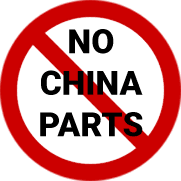Fuel Gauge Systems in Aircraft
Running out of fuel while driving a car can be a frustrating experience and mean a wasted afternoon. Running out of fuel while flying an aircraft, however, can verge on disastrous. For the aviation industry, proper fuel quantity indication is incredibly important, given the human lives and millions of dollars of property that can be put at risk if a commercial airliner runs out of fuel mid-flight.
Many smaller aircraft utilize float level gauges that feed information on the fuel levels based on magnetic couplings and potentiometers to the pilot, while larger aircraft with more complicated fuel systems rely on a network of capacitance probes. These capacitors are mounted in the fuel tank, and as fuel is consumed and enters the tanks through special vents, the tank’s capacitance alters, allowing tank levels to be calculated by the on-board computer. Multi-level fuel sensors can be employed to indicate dangerously low tank levels to the pilot, and as a redundancy precaution in case one sensor fails. Fuel systems can also rely on pressure and temperature sensors to ensure proper rates of fuel injection, and to prevent harmful condensation.
At ASAP Parts 360, owned and operated by ASAP Semiconductor, we can help you find all the fuel gauge systems and parts for the aerospace, civil aviation, and defense industries. We’re always available and ready to help you find all the parts and equipment you need, 24/7-365. For a quick and competitive quote, email us at sales@asapparts360.com or call us at 1-708-387-7800.


